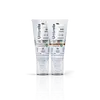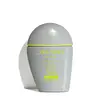What's inside
What's inside
 Key Ingredients
Key Ingredients

 Benefits
Benefits

 Concerns
Concerns

 Ingredients Side-by-side
Ingredients Side-by-side

Isodecyl Neopentanoate
EmollientCaprylyl Methicone
Skin ConditioningCyclopentasiloxane
EmollientMethylene Bis-Benzotriazolyl Tetramethylbutylphenol
UV FilterEthylhexyl Methoxycinnamate
UV AbsorberLauryl PEG-10 Tris(Trimethylsiloxy)Silylethyl Dimethicone
EmulsifyingDiethylamino Hydroxybenzoyl Hexyl Benzoate
UV FilterPropylheptyl Caprylate
EmollientTitanium Dioxide
Cosmetic ColorantPhenyl Trimethicone
Skin ConditioningIsostearyl Isostearate
EmollientZinc Oxide
Cosmetic ColorantIsododecane
EmollientDimethicone
EmollientTalc
AbrasiveDibutyl Adipate
EmollientTribehenin
EmollientBis-Ethylhexyl Hydroxydimethoxy Benzylmalonate
AntioxidantSodium Potassium Aluminum Silicate
Caprylyl Glycol
EmollientCitric Acid
Buffering1,2-Hexanediol
Skin ConditioningKaolin
AbrasiveIsodecyl Neopentanoate, Caprylyl Methicone, Cyclopentasiloxane, Methylene Bis-Benzotriazolyl Tetramethylbutylphenol, Ethylhexyl Methoxycinnamate, Lauryl PEG-10 Tris(Trimethylsiloxy)Silylethyl Dimethicone, Diethylamino Hydroxybenzoyl Hexyl Benzoate, Propylheptyl Caprylate, Titanium Dioxide, Phenyl Trimethicone, Isostearyl Isostearate, Zinc Oxide, Isododecane, Dimethicone, Talc, Dibutyl Adipate, Tribehenin, Bis-Ethylhexyl Hydroxydimethoxy Benzylmalonate, Sodium Potassium Aluminum Silicate, Caprylyl Glycol, Citric Acid, 1,2-Hexanediol, Kaolin
Ethylhexyl Methoxycinnamate 4.9%
UV AbsorberTitanium Dioxide 15%
Cosmetic ColorantDimethicone
EmollientSilica
AbrasiveBis-PEG-18 Methyl Ether Dimethyl Silane
EmollientIsododecane
EmollientTrimethylsiloxysilicate
EmollientSd Alcohol 40-B
AstringentTrimethylsiloxysilicate/Dimethiconol Crosspolymer
Isopropyl Myristate
EmollientAluminum Hydroxide
EmollientPEG-9 Polydimethylsiloxyethyl Dimethicone
EmulsifyingStearic Acid
CleansingIsostearic Acid
CleansingDextrin Palmitate
EmulsifyingDisteardimonium Hectorite
StabilisingBis-Butyldimethicone Polyglyceryl-3
CleansingLauroyl Lysine
Skin ConditioningPEG/PPG-14/7 Dimethyl Ether
Skin ConditioningPCA Dimethicone
Skin ConditioningPhytosteryl/Octyldodecyl Lauroyl Glutamate
Skin ConditioningPhytosteryl Macadamiate
Skin ConditioningLecithin
EmollientGlycyrrhiza Glabra Root Extract
BleachingSucrose Tetrastearate Triacetate
EmollientPolymethylsilsesquioxane
Talc
AbrasiveMethyl Methacrylate Crosspolymer
Alumina
AbrasivePolysilicone-2
Triethoxycaprylylsilane
Hydrogen Dimethicone
Tocopherol
AntioxidantBHT
AntioxidantEthylparaben
PreservativeParfum
MaskingIron Oxides
Mica
Cosmetic ColorantEthylhexyl Methoxycinnamate 4.9%, Titanium Dioxide 15%, Dimethicone, Silica, Bis-PEG-18 Methyl Ether Dimethyl Silane, Isododecane, Trimethylsiloxysilicate, Sd Alcohol 40-B, Trimethylsiloxysilicate/Dimethiconol Crosspolymer, Isopropyl Myristate, Aluminum Hydroxide, PEG-9 Polydimethylsiloxyethyl Dimethicone, Stearic Acid, Isostearic Acid, Dextrin Palmitate, Disteardimonium Hectorite, Bis-Butyldimethicone Polyglyceryl-3, Lauroyl Lysine, PEG/PPG-14/7 Dimethyl Ether, PCA Dimethicone, Phytosteryl/Octyldodecyl Lauroyl Glutamate, Phytosteryl Macadamiate, Lecithin, Glycyrrhiza Glabra Root Extract, Sucrose Tetrastearate Triacetate, Polymethylsilsesquioxane, Talc, Methyl Methacrylate Crosspolymer, Alumina, Polysilicone-2, Triethoxycaprylylsilane, Hydrogen Dimethicone, Tocopherol, BHT, Ethylparaben, Parfum, Iron Oxides, Mica
Ingredients Explained
These ingredients are found in both products.
Ingredients higher up in an ingredient list are typically present in a larger amount.
Dimethicone is a type of synthetic silicone created from natural materials such as quartz.
What it does:
Dimethicone comes in different viscosities:
Depending on the viscosity, dimethicone has different properties.
Ingredients lists don't always show which type is used, so we recommend reaching out to the brand if you have questions about the viscosity.
This ingredient is unlikely to cause irritation because it does not get absorbed into skin. However, people with silicone allergies should be careful about using this ingredient.
Note: Dimethicone may contribute to pilling. This is because it is not oil or water soluble, so pilling may occur when layered with products. When mixed with heavy oils in a formula, the outcome is also quite greasy.
Learn more about DimethiconeEthylhexyl Methoxycinnamate is an organic compound that provides UVB protection. It often goes by the more common name of octinoxate. It is created from methoxycinnamic acid and 2-ethylhexanol.
Ethylhexyl Methoxycinnamate absorbs UVB rays with wavelengths between 280-320 nm. UV absorbers protect your skin by using chemical reactions to convert UV rays into heat and energy.
UVB (290-320 nm) rays emit more energy than UVA rays. They are capable of damaging DNA, causing sunburns and are thought to be linked to skin cancer.
The state of Hawaii has banned sunscreens containing octinoxate due to its potential impact on coral reefs. More research is needed to bridge gaps in this research. The European Union allows higher levels of octinoxate in sunscreens than the US and Australia.
Ethylhexyl Methoxycinnamate is oil soluble. It is not stable and may lose efficacy when exposed to sunlight.
Learn more about Ethylhexyl MethoxycinnamateIsododecane is a fragrance, emollient, and solvent.
As an emollient, it helps your skin stay soft and hydrated. Emollients help trap moisture into your skin.
Isododecane's role as a solvent makes it a great texture enhancer. It spreads smoothly on skin and does not leave a sticky feeling behind. Isododecane also helps prevent color transfer in makeup products.
Isododecane is not absorbed into skin.
Learn more about IsododecaneTalc is a clay mineral. It helps absorb moisture and improve the texture of products. Like other types of clay, Talc can have a slight exfoliating effect on skin. Talc can be added to increase the volume of products.
Some Baby powders are made by combining talc with corn starch. The word "talc" comes from Latin and originates from Arabic. Talc is a mineral commonly found throughout the world.
If you have any concerns about using talc, we recommend checking out the FDA's official page.
Learn more about TalcTitanium dioxide is a mineral UV filter widely used in sunscreens and cosmetics.
It is one of only two UV filters officially classified as “mineral” by regulatory agencies, the other being zinc oxide.
Titanium dioxide provides broad-spectrum protection mostly in the UVB and UVAII range, with some protection in the UVAI range.
While its UVA protection isn’t as strong as zinc oxide’s, the difference is minor.
A common myth is that mineral UV filters reflect UV light. However, modern research shows titanium dioxide absorbs UV radiation like chemical filters (~95% absorption & 5% reflection).
Thanks to its non-irritating nature, titanium dioxide is suitable for sensitive, acne-prone, or redness-prone skin. It is unlikely to cause "eye sting" like other sunscreen ingredients.
A major drawback of this ingredient is its white cast and thick texture. This is why mineral sunscreens often leave a white cast and are less cosmetically elegant than chemical/hybrid sunscreens.
To improve white cast and spreadability, micronized or nano-sized titanium dioxide is often used.
There are ongoing concerns surrounding nano-titanium oxide's impact on marine ecosystems.
There is no conclusive evidence that any form of titanium oxide (or any other sunscreen ingredients) will cause harm to marine ecosystems or coral reefs. The science is still developing but many consumers are keeping a close eye on this issue.
Please note, many destinations have reef-safety sunscreen rules. For instance, the U.S. Virgin Islands advises all visitors to use non-nano mineral sunscreens.
Nano mineral sunscreens once raised safety concerns about absorption into skin.
Extensive research has shown that they do not penetrate healthy or damaged skin; they remain safely on the surface and the top layer of dead skin (stratum corneum).
You'll likely find titanium dioxide bundled with alumina, silica, or dimethicone. These ingredients help make titanium dioxide highly photostable; this prevents it from interacting with other formula components under UV light.
Learn more about Titanium Dioxide